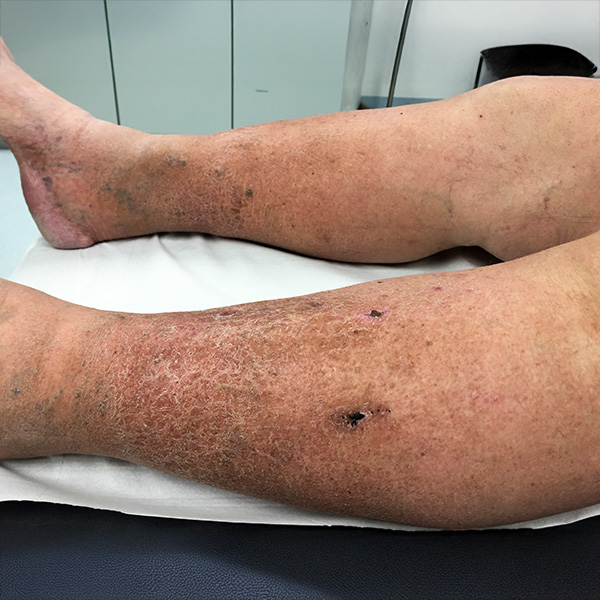Chronic Venous Insufficiency (CVI)
Chronic venous insufficiency (CVI) is a condition in which the veins in your legs are unable to pump blood back up to your heart effectively. This happens when the valves inside your veins become weakened or damaged, causing blood to pool in the legs instead of flowing upward.
Over time, CVI can lead to swelling, discomfort, varicose veins, and changes in the skin. If left untreated, it may result in more serious complications such as ulcers.
Is Chronic Venous Insufficiency Common?
Yes, CVI is fairly common, especially in adults over the age of 50. Women tend to be affected more often than men, but anyone can develop the condition. Risk factors include family history of vein disease, obesity, pregnancy, prolonged sitting or standing, and previous blood clots in the legs.

How Will I Know if I Have Chronic Venous Insufficiency?
CVI develops gradually, and early symptoms may be mild or easy to overlook. Some of the most common signs and symptoms include:
- Swelling in the lower legs or ankles
- A heavy, aching, or tired feeling in the legs
- Cramping or throbbing pain
- Varicose veins
- Skin changes, such as darkening or thickening around the ankles
- Ulcers or open sores that are slow to heal
Your provider can diagnose CVI through a physical exam and specialized imaging tests, such as an ultrasound, to check how well blood is flowing in your veins.
What Treatment Options are Available for Chronic Venous Insufficiency?
Lifestyle Changes
Regular exercise, elevating your legs, and maintaining a healthy weight can help improve circulation and reduce symptoms.
Compression Stockings
These help push blood up from the legs toward the heart, preventing blood from pooling.
Medications
In some cases, medicines may be prescribed to help improve blood flow or treat related conditions.
Minimally Invasive Procedures
Treatments such as sclerotherapy, endovenous laser therapy (EVLT), or radiofrequency ablation can close off damaged veins and redirect blood to healthier veins.
Surgical Options
In more severe cases, vein stripping or other surgical procedures may be recommended.
Which Treatment Option is Best for You?
Your provider at Veinology Health will work closely with you to determine the best treatment plan for your unique needs. Many patients find relief with a combination of lifestyle changes and minimally invasive procedures, while others may require more advanced treatment.
With proper care, symptoms of CVI can be significantly reduced and complications avoided.
Take the First Step Toward Healthier Legs
If you’re experiencing leg swelling, heaviness, or skin changes that may be related to chronic venous insufficiency, don’t wait for symptoms to worsen. The team at Veinology Health is here to help. Call us today at Veinology Health or request an appointment online to explore your treatment options.
